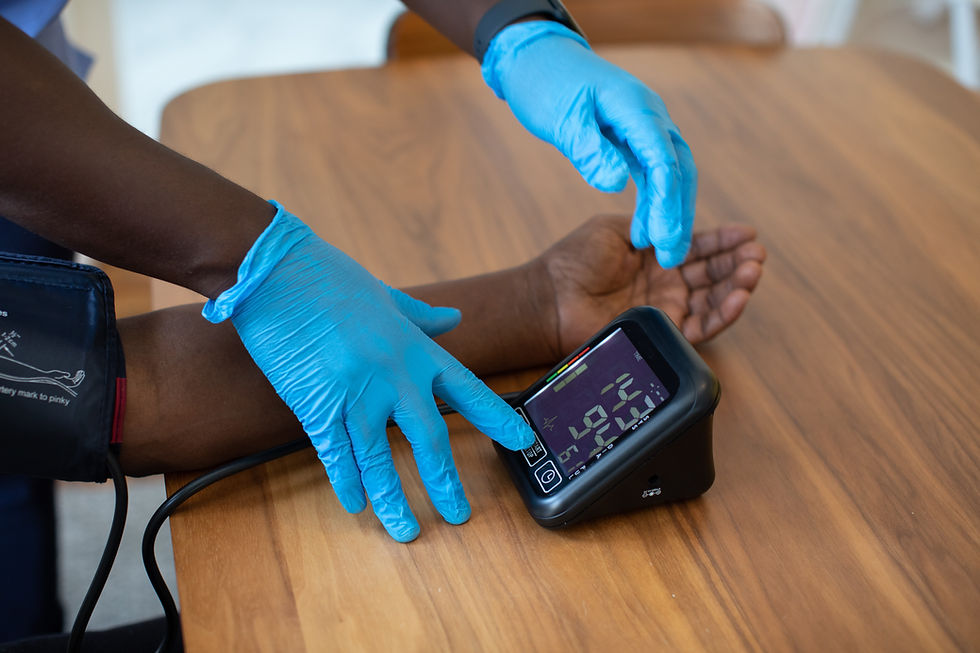The 1993 Turning Point: When Women Finally Gained Inclusion in Clinical Trials
- Grace Carter

- Dec 4, 2024
- 3 min read

It may come as a surprise that until relatively recently, women were largely excluded from clinical trials. It wasn’t until the enactment of the National Institutes of Health (NIH) Revitalisation Act of 1993 in the United States that the inclusion of women in clinical research became a legal requirement. This landmark legislation was a game-changer, bringing to light the vast gaps in medical knowledge about how treatments affect women’s bodies.
Why Were Women Excluded?
Historically, clinical trials primarily studied male subjects, driven by two key concerns: the perceived complexity of female hormonal cycles and the fear of harming potential pregnancies.
Researchers believed that including women would introduce too many variables, potentially complicating results. The thalidomide tragedy of the 1960s, in which a drug given to pregnant women caused severe birth defects, further cemented this cautious approach.
The unintended consequence? Entire generations of women received medications and treatments that were never adequately tested on their bodies, leaving them vulnerable to unknown risks and side effects.
The Cost of Exclusion
Excluding women from clinical trials had profound implications. For decades, medical guidelines and drug dosages were based on studies conducted almost exclusively on men. This male-centric approach ignored the physiological differences between sexes, including hormonal variations, metabolism rates, and immune responses.
For example:
Cardiovascular diseases: Women often present different symptoms of heart attacks than men, yet the medical field only began recognising this disparity after women were included in research.
Drug efficacy and safety: Certain medications, such as Ambien (a common sleep aid), were later found to affect women differently. It wasn’t until 2013 - two decades after the NIH mandate - that the FDA recommended a lower dosage for women due to findings of prolonged drug clearance from their systems.
Autoimmune conditions: Women are disproportionately affected by autoimmune diseases, yet this was overlooked for years due to their exclusion from research.
The 1993 NIH Revitalisation Act
The NIH Revitalisation Act of 1993 mandated the inclusion of women in NIH-funded clinical trials and required researchers to analyse data by sex. This represented a pivotal shift toward more equitable and representative science, forcing the medical community to confront its gender biases.
In practice, this meant:
Mandatory inclusion: Women could no longer be systematically excluded from clinical research.
Subgroup analysis: Researchers were required to study how treatments affect women and men differently, ensuring more personalised healthcare.
Progress Made – But Challenges Remain
The inclusion of women in clinical trials has led to significant advances in understanding female health. Research now acknowledges sex-based differences in everything from cancer treatments to mental health therapies. However, challenges persist:
Intersectionality: Women of diverse racial and socioeconomic backgrounds are still underrepresented in research. This limits understanding of how treatments work across different populations.
Pregnancy research: Pregnant women remain largely excluded from clinical trials, perpetuating gaps in knowledge about safe medications during pregnancy.
Funding gaps: Studies focused specifically on female health issues often receive less funding, reflecting broader societal biases.
Why Representation Matters
The inclusion of women in clinical trials is not just a matter of fairness - it’s essential for advancing healthcare. Women’s bodies are not simply smaller versions of men’s; they respond differently to diseases, treatments, and medications. Failing to account for these differences can lead to misdiagnosis, ineffective treatments, and preventable health risks.
Looking Ahead
While the 1993 legislation marked a turning point, it’s just the beginning of a broader effort to address historical inequities in medical research. As we push for more inclusive and comprehensive studies, we pave the way for a healthcare system that truly serves everyone. After all, medicine should work for all of humanity - not just half of it.




Comments